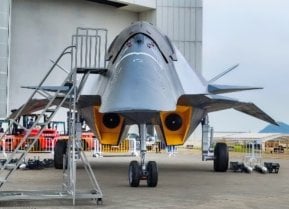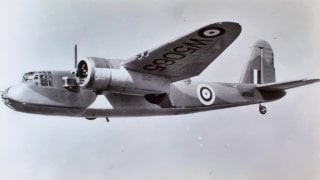Britain’s B-26 Botha Is the Worst Bomber of World War II
The B-26 Botha’s design was flawed because there were too many operational requirements imposed that often ran counter to sound aircraft engineering. Inevitably, compromises had to be made between a functional aircraft design and these operational requirements.
In 1938, the British Royal Air Force (RAF) Blackburn B-26 Botha took flight. It was part of the RAF’s rearmament program. Blackburn Aircraft, Ltd., built the twin-engine plane that was intended to be a multirole platform. Yet, it is widely considered to be the worst bomber ever built.
Powered by two Bristol Perseus XI radial engines, it was soon discovered that the B-26 lacked sufficient power. These engines, as it turned out, were not powerful enough for the size of the B-26. Because the Botha lacked adequate power, it had awful speed and climb rates, making the plane relatively useless.
And the B-26’s design was that of a high-wing monoplane, with a retractable undercarriage. The plane was meant for a crew of four that was ultimately reduced to three due to operational restraints.
Problems galore
Almost immediately, Botha’s problems became apparent. The aircraft had terrible stability, notably in yaw, making it nearly impossible for the pilots to handle.
And that was in good weather. In inclement weather, the plane became a death trap.
In fact, by the time the plane entered service in 1940 with the RAF Coastal Command, the plane was a massive letdown for the British military. Many Bothas were lost during training flights because of the problems listed above. Indeed, it was given the nickname “The Flying Coffin” by its crews over the years.
Still, once World War II erupted, the British pressed these flawed birds into service against the Nazis. The Botha may have been a poorly designed bird, but it did have operational use: notably as an anti-submarine warfare platform. However, the bird was withdrawn from frontline use by 1941 because those limitations were simply too great to overcome.
Some of these birds were ultimately converted into air-sea rescue planes. The Bothas had large fuselages that allowed them to carry lifeboats. Other units were relegated to mere training roles where their performance was less critical in combat scenarios.
Botha’s design was flawed because there were too many operational requirements imposed that often ran counter to sound aircraft engineering. Inevitably, compromises had to be made between a functional aircraft design and these operational requirements.
Inevitably, the choice of engines and the overall power-to-weight ratio were significant miscalculations, showcasing the importance of matching engine technology with engine design.
A Reminder of Failure
The Botha is a continual reminder of what happens when a nation builds the wrong sort of plane. In this case, the failures of the Botha show the risks of rushing aircraft into service, without future testing.
Yet, it’s important to recall that World War II saw the rise of iconic British planes, like the spitfire.
Sadly, the B-26 Botha’s abject failure as a viable weapons platform and power projection system was a symbol of just how far the British Empire had fallen. Yet, the presence of aircraft like the British Spitfire more than made up for it.
About the Author:
Brandon J. Weichert, a National Interest national security analyst, is a former Congressional staffer and geopolitical analyst who is a contributor at The Washington Times, the Asia Times, and The-Pipeline. He is the author of Winning Space: How America Remains a Superpower, Biohacked: China’s Race to Control Life, and The Shadow War: Iran’s Quest for Supremacy. His next book, A Disaster of Our Own Making: How the West Lost Ukraine, is due October 22 from Encounter Books. Weichert can be followed via Twitter @WeTheBrandon.
All images are Creative Commons or Shutterstock.


